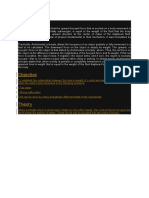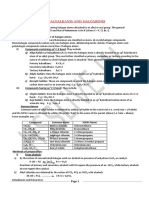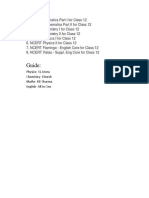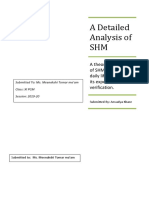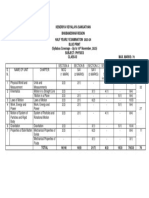0% found this document useful (0 votes)
1K views2 pagesMotion Class9 Project
This project explores the concept of motion in physics, defining it as the change in position of an object over time. It categorizes motion into four types: translatory, circular, rotational, and oscillatory, and introduces key terms and formulas related to motion. The document emphasizes the importance of understanding motion in everyday life and its relevance to science and technology.
Uploaded by
rud406167Copyright
© © All Rights Reserved
We take content rights seriously. If you suspect this is your content, claim it here.
Available Formats
Download as DOCX, PDF, TXT or read online on Scribd
0% found this document useful (0 votes)
1K views2 pagesMotion Class9 Project
This project explores the concept of motion in physics, defining it as the change in position of an object over time. It categorizes motion into four types: translatory, circular, rotational, and oscillatory, and introduces key terms and formulas related to motion. The document emphasizes the importance of understanding motion in everyday life and its relevance to science and technology.
Uploaded by
rud406167Copyright
© © All Rights Reserved
We take content rights seriously. If you suspect this is your content, claim it here.
Available Formats
Download as DOCX, PDF, TXT or read online on Scribd
/ 2





